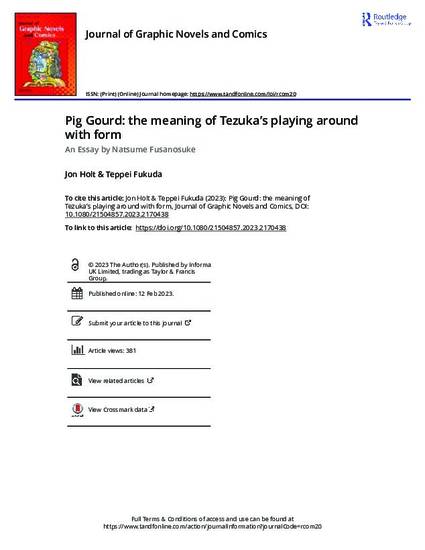
- Graphic Novels
Taking an arguably minor character from Tezuka Osamu’s oeuvre, Natsume Fusanosuke argues how the Pig Gourd’s cameos even in the artist’s most serious works demonstrate a bifurcated sense of play and high-brow artistry in his manga. Natsume employs an early version of his ‘manga-expression theory’ (manga hyōgen-ron) manga-analysis approach, which he began to develop in this, his first manga-studies monograph and seminal study of the ‘god of manga’ Tezuka Osamu. This translation of a chapter essay from Where Is Tezuka Osamu? (Citation1992) demonstrates Natsume’s versatility in isolating thematic patterns or formal experimentations in an artist’s style, including character design and page layouts. Natsume’s ‘manga-expression theory’ approach, which focuses on three basic elements of manga (words, pictures, and frames), can be seen in this essay on Tezuka’s trademark Pig Gourd character, who will pop up or even decimate panel borders to show not only Tezuka’s embarrassment at being unable to resist a sight gag but also his bold desire to play with panel possibilities. The larger picture that Natsume describes here is how this ubiquitous cameo character became a litmus test of readers’ tastes as the manga master’s target demographic became older and wise to his stylistic idiosyncrasies.
© 2023 The Author(s). Published by Informa UK Limited, trading as Taylor & Francis Group.
